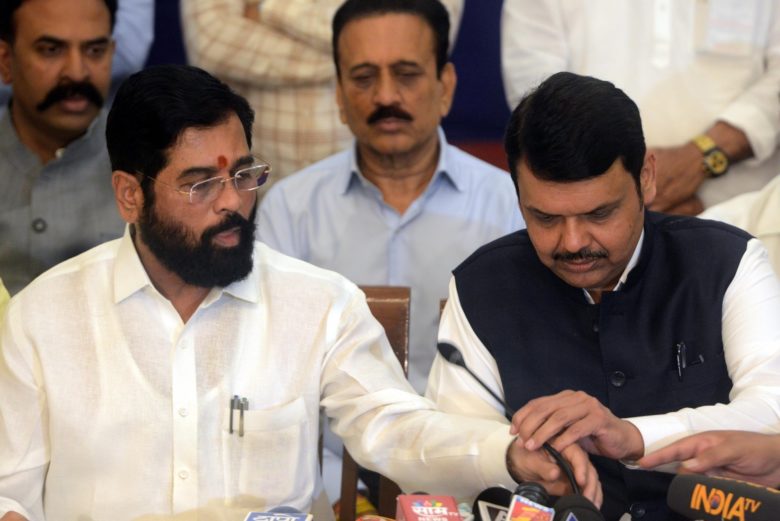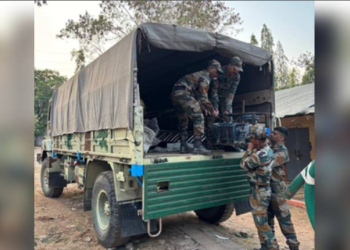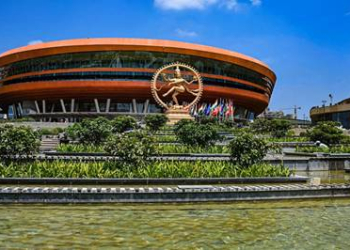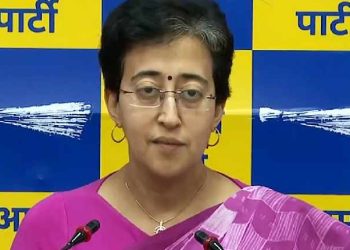Mumbai: After wresting the state government, the question rankling supporters of outgoing Chief Minister Uddhav Thackeray is – will the new CM-designate Eknath Shinde now go all out to grab control over the 56-year-old Shiv Sena?
A subtle indicator to this came this evening when hoardings went up in his home district of Thane showing the late Shiv Sena founder Balasaheb Thackeray, the late Thane strongman and the CM-designate’s mentor Anand Dighe, Shinde and his MP son Shrikant Shinde, and the party logo of a Tiger, the vehicle of Goddess Bhavani Mata.
Significantly, the picture of exiting CM and Shiv Sena President Uddhav Thackeray was conspicuously missing, though barely 10 days ago, Shinde was the de facto No 2 in the state cabinet, and most party banners, hoardings usually carry Thackeray’s photos prominently.
Several party leaders like MP Sanjay Raut and Kishore Tiwari have made it clear that it is not so easy for “anybody to walk out” or “take away the party” and said mere claims mean nothing as there are a lot of other legal issues involved.
Other leaders pointed out that claiming the support of majority Sena MLAs will not guarantee that the Shinde faction can be treated as the ‘real Shiv Sena’ and get to keep the trademark party logo or its recognisable election symbol of Bow & Arrow.
In a situation of a vertical split – though the Shinde faction has repeatedly asserted they have not quit the Sena and they are the real party – despite having the higher numbers of lawmakers like MLAs or MPs will not automatically entitle them to be recognised as a separate party or its vote-catching assets.
Other aspects like the party’s different decision-making bodies, the other elected branches like its trade union, women’s wing, youth wing, the number of party members, active members, etc, would also come into play besides the number of lawmakers.
Later, the rival claims would go to the Election Commission of India which would ultimately decide which of the split faction deserved to be the ‘original party’ and be alloted the party assets, after examining precedents in such disputes.
However, if the two parties are not satisfied then they would be free to approach the appropriate court for a legal solution.
(IANS)



















